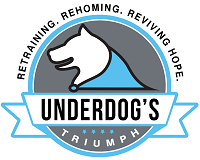I had a recent conversation with my mom about how their dog training was going with their semi-recently adopted dog Murphy. Murphy, a Sheltie, is true to his breed and is very reactive about his surroundings. His basic mantra is: if it moves, I shall bark at it. With the warmer months, they’ve been having more issues with him barking at the cars that drive by their house if they have the screen door open. Loud noises + large moving object = thing that must be barked at until it leaves (which it always does!). My mom was describing how she was telling him “No” to indicate that this wasn’t something that he should do. This really made me stop and think: what does “no” actually mean to a dog?
I mean think of all the times you say “no” in a day to your dog (don’t worry I do it too). If he jumps up on a guest? No. If he tries to snarf your pizza? No. If he pulls on the leash? No. Chewing your favorite pair of shoes? NO!
The way we use “no” makes it even harder for dogs to understand what the heck we’re actually trying to get them to do. We use it for so many different reasons and so many different situations, there’s literally no way a dog can understand what we’re asking them to do. Recall I wrote a previous blog post on how to train your dog to DO something vs rather to NOT do something, and using “No” does the later. The other thing that “No” doesn’t exactly bring out the best in us. How many of you say “no” to your dog in a super happy cheerful tone? How many of you say No in a way that is meant to strike the fear of god into your cute little fluff who’s taken off with your favorite pair of slippers? Don’t worry, I hear you!
Instead we need to have a way to interrupt and stop the unwanted behavior and then redirect to change that behavior to something else.
From my summer “Absolute Dogs – Naught but Nice” program, they had us teach our dog an attention getting cue. Some unique sound or noise that says “HEY, YOU” to our dog and gets their attention to orient themselves back to you. Having your dog’s attention on you is super powerful because when they’re focused on you they can’t be doing any of the other 10,000 other “naughty” things instead. Plus having this powered up, awesome cue in your back pocket means that we have the power to do something positive with our dogs, instead of yelling “No” at them as they play keep away with the remote.
We always want to strive to ADD good things to our interactions with our dogs and not ADD bad things. We want to be their rock; the person they turn to when they are unsure of what to do. And to be that person we need to remember to always think exact what were asking them to do and do our best to keep our interactions happy and fun, so they always come running back with a wag of the tail and joy in their face.
For my mom’s situation I asked her what she wanted Murphy to do instead of barking like a maniac and with a little prompting to get past the “just want him to stop barking” phase, she decided she wanted this new cue to mean that he would come to her and sit in front of her. That. That is a cue that’s worth training, and an attention noise is exactly what you need to get you there.
